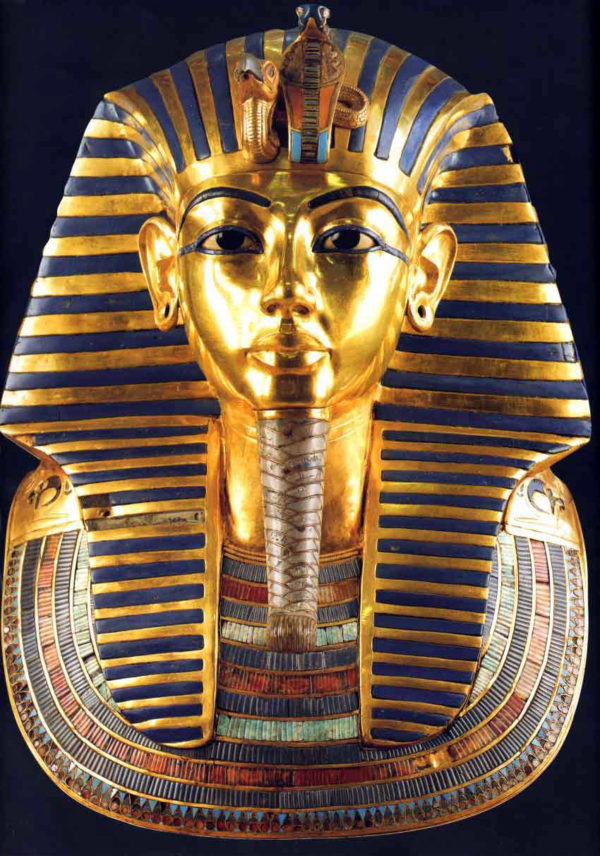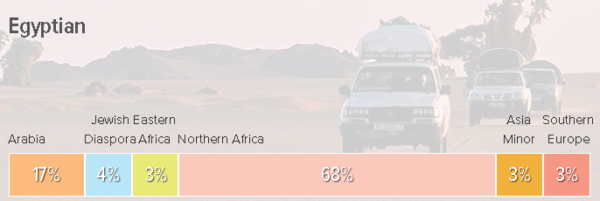Deciphering The Egyptian DNA Puzzle
It is great when science confirms traditional wisdom. The net buzzes with discussion of a genetic study of ancient Egyptian mummies, following up on the the knowledge that parallel human evolution occurred in Europe (see contrarianism). But most have missed the point.
From the abstract:
The researchers discovered that ancient Egyptians closely resembled ancient and modern Near Eastern populations, especially those in the Levant, and had almost no DNA from sub-Saharan Africa. What’s more, the genetics of the mummies remained remarkably consistent even as different powers—including Nubians, Greeks, and Romans—conquered the empire.
Here we have an exercise in “hide the ball.” What is not being mentioned?
- Ancient Egyptians resembled modern Levantines. But who do modern Egyptians resemble?
- The mummies remained consistent despite occupations, but what about Egyptians as a whole?
We are — cleverly, so very cleverly — ducking the question of population change in Egypt. As a child, you too may have wondered why the Egyptians once built great monuments but now seem barely able to build a two-story house, and are known mainly for hopeless invasions of Israel and cuisine. What happened?
Luckily, National Geographic is willing to tell us something about modern Egyptian heritage:
This reference population is based on native Egyptians. As ancient populations first migrated from Africa, they passed first through northeast Africa to southwest Asia. The Northern Africa and Arabian components in Egypt are representative of that ancient migratory route, as well as later migrations from the Fertile Crescent back into Africa with the spread of agriculture over the past 10,000 years, and migrations in the seventh century with the spread of Islam from the Arabian Peninsula. The East African component likely reflects localized movement up the navigable Nile River, while the Southern Europe and Asia Minor components reflect the geographic and historical role of Egypt as a historical player in the economic and cultural growth across the Mediterranean region.
Modern Egyptians are 68% North African, 17% Arab, 4% Jewish, and 3% each from Asia Minor, East Africa and Southern Europe. In other words, while the mummies remained consistent, the population has not, which may explain why modern Egyptians do not do the things the ancient ones did.
Each population has a genetic profile based on centuries of adaptation, and these genes convey abilities and inclinations known as traits. By themselves, traits are rarely complete in the form we think of them, but when a profile is complete, different traits complement each other and produce the abilities, preferences and intuitive knowledge that we see in each population. Just as there is no single gene for intelligence, it takes many genes — like a net — to produce the effects we recognize as distinct to a population. When the genetic profile is disturbed by admixture, even trace admixture, then those abilities are lost.
In Egypt, we see a warning. Traditional wisdom was that as Egypt rose in power and wealth, people came from all over to be part of this civilization, and gradually replaced the original Egyptians with a group whose genetic net was disrupted and so lacked the abilities of the original. Originally it was thought that gradual absorption of Nubians shattered the Egyptian bloodline.
It turns out that the picture is more complex and delivers a more dire warning for us. The question is not what you mix with, but that you mix at all. Even trace admixed groups like Southern and Eastern Europeans, when mixed into another European group, can erase its genetic net and replace it with generic people lacking the original abilities.
Tags: admixture, DNA, egypt, miscegenation, mummies, trace admixture











